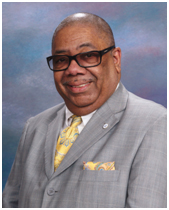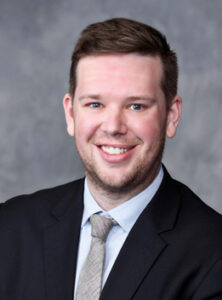
By Rev. Donald L. Perryman, Ph.D.
The Truth Contributor
Once it was humming with vitality. It was the center of black entrepreneurship, stores, restaurants, and taverns. This was a black empowerment zone. And then it was gone. – Michael D. Sallah
Even today, one can sense the proud but “troubled” soul of Toledo’s Dorr Street Corridor. Formerly known as “The Block,” the nearly two-mile stretch bound by Smead Avenue on the west and Washington Street to the east is the place where a vibrant Black community once stood.
Rich in food, art, music, culture, entrepreneurial initiative, and activism, Dorr Street was home to over 70 Black commercial enterprises and mirrored Bourbon Street in New Orleans. The corridor also featured professional concerns such as doctors, dentists, lawyer’s offices, and banks. It was a Black empowerment zone that Toledoans regarded as our Black Wall Street.
That changed in the mid-1970s when the government decided to “save us from ourselves.” With promises to beautify the neighborhood and widen streets, city leaders spent $25 million in federal funds to demolish and relocate over 400 homes and businesses in the name of urban renewal.
Over the past few decades, continued disinvestment has led to depopulation and increased violence and poverty. Yet, the spirit of Dorr Street has started to rekindle with the recent efforts to reclaim the community’s great cultural heritage.
I spoke with David Mann, president and CEO of the Lucas County Land Bank, about his work and whether Dorr Street’s glory might be restored. Here is our discussion.

Perryman: Please tell our readers a bit about your background.
Mann: I grew up in Dayton but came here to go to UT for both law school and undergrad. Coming out of undergrad, I worked for the county commissioners in various roles and helped with projects like The Huntington Center. Lucas County was the second Ohio county to form a land bank. I was asked to help lead that entity. For the last 11 years, I have helped to tackle all of those challenges related to vacant, abandoned properties and work to strengthen our community’s neighborhoods.
Perryman: I also remember you working for a very prestigious law firm. Talk about how you shifted your focus to help lift neighborhoods.
Mann: I had worked in government throughout law school. After I graduated, I thought it was worth experiencing what it’d be like to be in private practice. So, I joined the prominent firm of Marshall & Melhorn and worked very closely with folks like Keith Wilkowski. Having been there for a year, my experience taught me that my passion is really about public service and giving back to the community.
I liked what I did there, but in private law practice, most of your clients are folks who have enough money to pay somebody a lot of money for legal services. But still, many folks in our community need help who can’t afford that level of service. So that’s where my heart lies, doing something that benefits the community.
Perryman: What are land banks?
Mann: Land banks are public, private, hybrid organizations whose job is to help make vacant, abandoned and usually tax-delinquent properties productive again. They are a little bit government, a little bit nonprofit. They are the tool kit that communities can use to make change happen in the neighborhood.
Perryman: How can the Land Bank aid coalitions like the Junction Coalition, Dorr Street Corridor Redevelopment Coalition and Englewood, who are trying to address the negative impact of disinvestment in their communities that began during the 1960s and 1970s?
Mann: The first thing is to deliver opportunity for those neighborhood coalitions to see the kinds of things they’d like to see start to happen.
In places like the Junction neighborhood or Englewood, there are far more vacant lots and undeveloped pieces of property because of challenges with red-lining, lack of investment, and inequity. The Land Bank’s tools and our ability to take ownership of vacant and abandoned property is one of the first steps. We can clear the title, take control of those sites from out-of-town speculators who neglected them and start fresh.
Perryman: What other ways can the Land Bank help?
Mann: The second thing is that we have resources to partner with coalitions to actually make investments. We recently worked with the Junction Coalition and Habitat for Humanity to transfer a couple of vacant lots where two new homes will get built, the first new construction for homeowners in the neighborhood in almost 15 or 20 years. So, positive reinvestment that way.
Those things are possible because we are listening to what neighborhoods and what the Junction Coalition, in that example, wants to see happen. Then using the Land Bank’s tools to help carry it out.
Perryman: I’ve heard talk about commercial development in other cities designed to return historic neighborhoods to their glorious heyday of the past. Would the Land Bank consider buying rights to spur commercial development to revitalize neighborhoods like Junction and Dorr Street?
Mann: In the right context, absolutely that can happen. An example of that possibility with us and the neighborhood as a partner is the St. Anthony’s church building, which was a property that many people didn’t want to see demolished. They didn’t want to lose that history.
For the Land Bank and Junction, that means an opportunity to rebuild that commercial corridor, rebuild that sort of business, and opportunity that was basically stolen from the community in the 50s and 60s and bring it back. But you have to have real estate assets to do that. So, investing in those real estate assets to catalyze that new development is precisely the kind of thing that we regularly talk about and think about.
Perryman: Are there other development possibilities?
Mann: We might have some exciting news with Congresswoman Marcy Kaptur in the next few months. But St. Anthony is one example of, ‘let’s use the assets that are available to catalyze growth and opportunity because what was lost can come back.’
The story of our community has been a lot of pain over the last 50 or 60 years. But that pain doesn’t have to last forever. That’s not a given, and it’s not that we as a community always have to struggle. But, we have to recognize why there was so much pain in the past and not repeat that. Yet, we also have so many opportunities to make this community better. As I said, the Land Bank is one piece of that larger puzzle to get that done.
Perryman: You mentioned Junction, but are there other partnerships with nonprofits, community organizations, lenders, or local government that would help you?
Mann: Yes, all of the above. If you go to the Old South End, we work very closely with the Sofia Quintero Arts and Cultural Center on neighborhood beautification. We work with the Historic South, one of the entities that continue to exist that is actually creating opportunities by investing in property and then re-selling it for homeownership. Everything we do at the land bank is a partnership with someone else trying to make a difference in the community.
Perryman: Is the Land Bank a financial institution?
Mann: We partner with financial institutions; we don’t do any direct financing. We do have a program that we call RISE Neighborhoods. It stands for Rebuild, Invest, Stabilize and Engage. We choose specific neighborhoods that are building off the residents who are driving investment in their own place. We think we could make a more concentrated, more impactful set of help if we spend more time in that place than just an occasional property here and there.
One of those neighborhoods is the Clinton Park neighborhood at Upton and Bancroft. Again, this is a neighborhood that is overwhelmingly Black folks. Clinton is a strong neighborhood in many ways but suffers from industrial blight that hasn’t been tackled.
In Clinton Park, even though we’re not a lender, we offer matching grants and other investment opportunities that can help people get these kinds of projects done.
Perryman: The Dorr Corridor is also a gateway that connects downtown with the University of Toledo via the central city. Is any of your work coordinated with UT’s vision?
Mann: A little bit, from time to time. The University is, I think, first and foremost focused on a couple of places that are right adjacent to its campus. However, for many institutions, like ProMedica or Mercy, I think there’s a renewed sense that employers can’t isolate themselves from the community and just hope that everything goes well.
Neighborhoods are never in a position to do redevelopment alone. They need the public sector to help them. Still, the private sector also has to step up and think about what kind of community they want to be located in and what type of help they want to provide. So it’s going to take all of us to tackle some of the challenges that we see today.
Perryman: So, you’ve shifted from focusing on demolition to concentrating on investment and reinvestment. Is that correct?
Mann: Yes, I don’t know that our focus was ever solely on demolition. Sometimes demolition is necessary. But it’s more important to invest in the people there and invest in building a neighborhood fabric that delivers opportunities to build wealth, healthy options, and basic quality of life. So all of that matters, too. And that’s what makes a neighborhood successful ultimately.
Our focus is on the people there and making sure that they’re supported and have all the different things they need. One of them is the removal of really bad buildings, but they need gardens, stable housing, and businesses too. So we want to be focused on all of that as we go forward.
Perryman: So, would you be willing to be a commercial developer for major community development?
Mann: Commercially, I will say that we are the owner of two skyscrapers in downtown Toledo right now. Those will be complicated redevelopment projects, although they will be an enormous benefit for downtown if it comes to pass.
Maybe there is a scenario where we are much more directly involved as developers. But, I think our first task is to find an excellent private developer who can meet the community’s needs, and we have some control over that as opposed to being it ourselves. But one never knows.
I couldn’t have told you 10 years ago that we would be doing all the things we are doing today, so I hate to pretend there isn’t that possibility.
Perryman: Thank you for giving our community hope that an opportunity exists to reclaim what was lost.
Contact Rev. Donald Perryman, PhD, at drdlperryman@enterofhopebaptist.org
